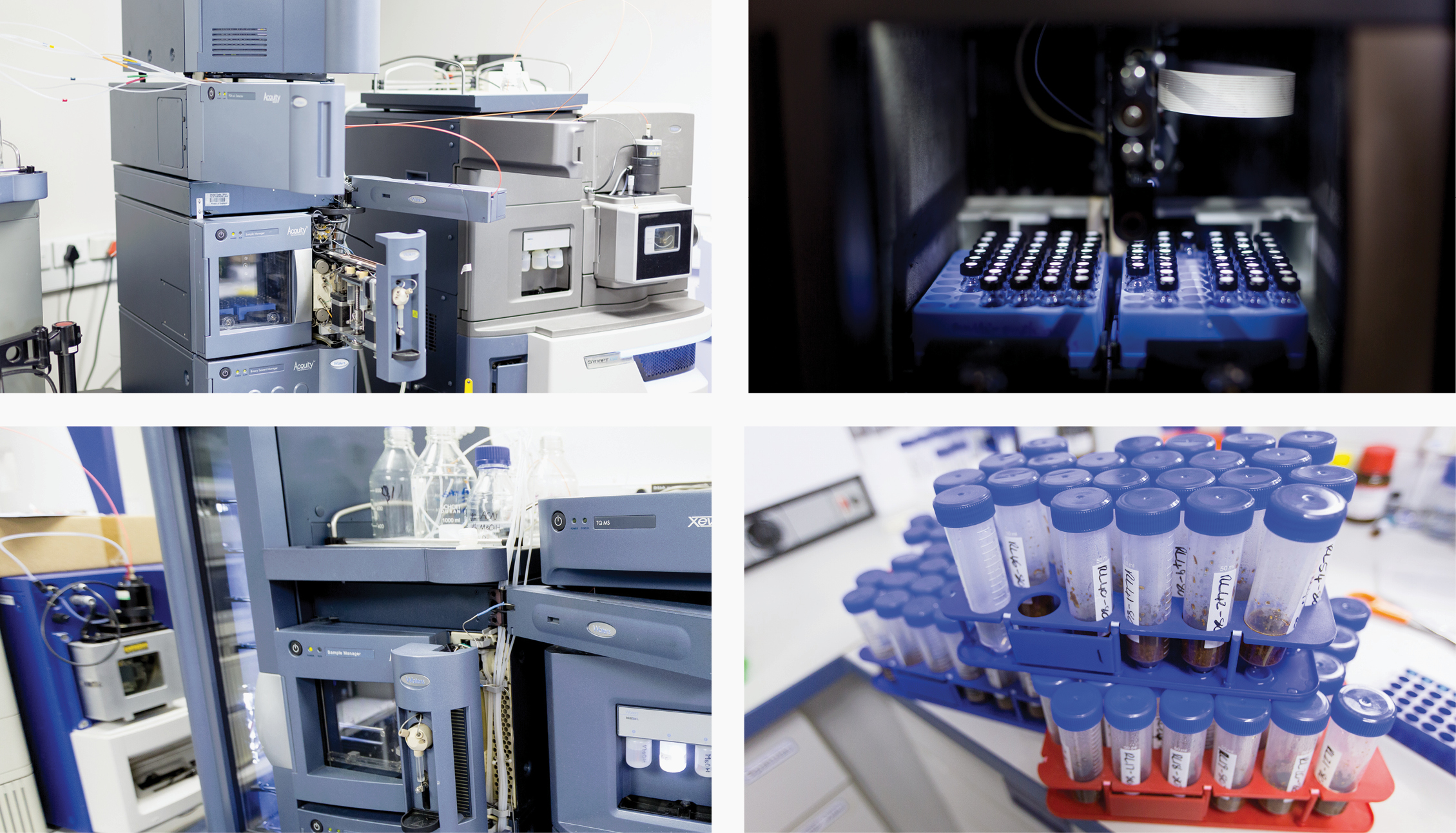Mass Spectrometry
|

|
The Mass Spectrometry Unit at Stellenbosch University in the Western Cape performs quantitative and qualitative analysis of organic molecules using Mass spectrometry. Services include GC-MS analysis, LC-MS analysis and accurate mass determinations.
The Mass Spectrometry Unit, part of the Central Analytical Facilities of Stellenbosch University, serves as a resource offering contemporary mass spectrometric techniques and the "state-of-the-art" instrumentation needed for the diversity of research interests on- and off-campus.
LC-MS
During electrospray ionisation (ESI), multiply charged ions of macromolecules are produced. This enables the accurate determination of molecular masses of molecules such as proteins, oligonucleotides and oligosaccharides. This technique is used for the analysis of polar non-volatile molecules. The ionisation is softer than electron impact (EI) and very few if any fragment ions are observed.
GC-MS
During electron impact ionisation (EI), ions are generated by colliding electrons with the sample molecule in gas phase, resulting in the loss of an electron from the sample molecule generating a molecular ion M+. Due to the excess in the internal energy, the molecular ion is often fragmented and may thus not show up in the spectrum. Fragmentation that occurs is highly reproducible and the spectra may often be used to search library databases for the tentative identification of the compound. This technique is used for the analysis of volatile, more non-polar compounds.
MS Unit: Services
-
Mass spectrometry (MS) with electrospray ionization (ESI) or atmospheric pressure chemical ionization (APCI)
-
GC-FID
-
GC-MS
-
Accurate mass determination
-
LC-MS and LC-MS/MS for both qualitative and quantitative work
-
LC-MS and HPLC method development and consulting services
-
A do-it-yourself service for HPLC with UV or RI detection for internal users
-
GC-MS and GC method development and consulting services
-
Training
-
Proteomics (peptide sequencing and protein identification via capillary LC-MS/MS & Database search)
-
Amino acid analysis
-
Ochratoxin A, natamycin, and sorbic acid analysis in wine
-
Melamine analysis
-
Plasticizers and phthalate analysis in various matrices including wine and spirits
-
Biogenic amine analysis in wine including tryptamine, tyramine and histamine
-
Various medicinal plant analysis including Hoodia, Harpagoside and Mesembrine
-
SPME GC-MS analysis of volatile compounds

